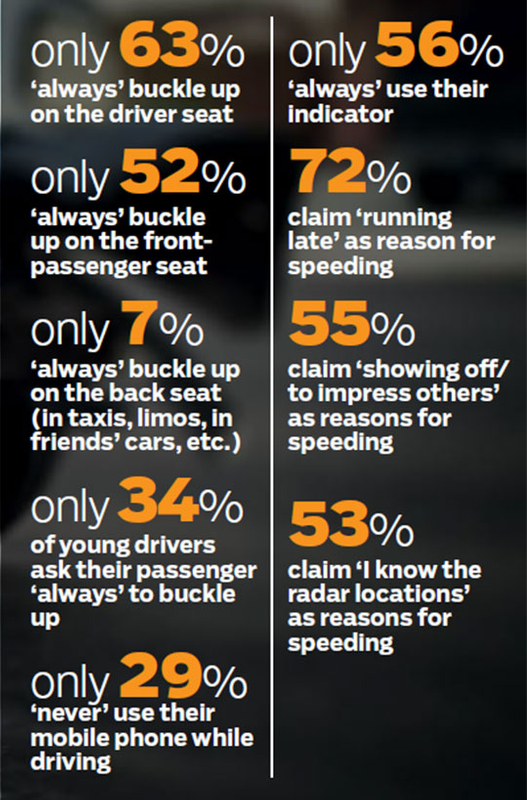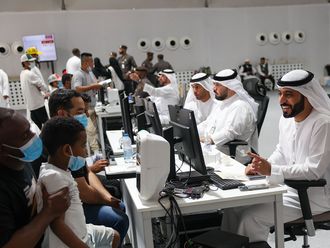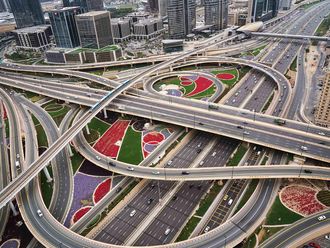_resources1_16a4a1613d8_medium.jpg)
DUBAI: New teenage drivers were eight times more likely to crash or have a close call in the first three months after getting a license and driving independently than they were during the last three months on a learner’s permit, reveals a recent study published in the US Journal of Adolescent Health on teenage driving habits. “The cause of teenage crashes is not the skill with which they can drive, but the judgment they exercise while driving,” says the study.
New teen drivers were also four times more likely to engage in risky behaviours like rapid acceleration, sudden braking and hard turns, according to a study led by Bruce G. Simons-Morton of the US National Institute of Child Health and Human Development.
Young drivers causing accidents is a perennial social issue and all societies are trying various ways to bring down the numbers through awareness campaigns on traffic safety.
_resources1_16a4a16142b_author.jpg)
Driving institutes teach the proper behaviour. However, novice and young drivers try to blend in with the ‘lived road culture’
In the UAE, in the first quarter of 2018, youngsters in the age group of 18-30 years caused 46 per cent of accidents in the emirate of Abu Dhabi, according to Abu Dhabi Police.
More than 4.6 million traffic violations were registered in 2017 in Abu Dhabi and most of them were committed by 18-30 age group, constituting 44.8 per cent, as per statistics from the police.
A survey by Road Safety UAE reveals that about 55 per cent of young drivers in the UAE in the age group of 18-24 claim they speed so they can show off to others or impress them.
The confidence of youth and an unfettered time behind the wheel after earning a driving licence can be a heady combination and often, this leads young, first-time drivers to experience a “feeling of being invulnerable ... when compared with older drivers, as our behaviour studies testify,” says Thomas Edelman, Managing Director of Road Safety UAE.
A common risk facing young drivers today involves distracting devices. A mere four seconds with eyes off the road vastly increases the chance of an accident, say experts.
“Teenage drivers have the highest rate of distraction-related fatal crashes of all other age groups,” Simons-Morton reported. And the temptations keep growing, with in-vehicle information and entertainment technologies and portable electronic devices of which teens are usually the earliest adopters.
“There are three kinds of distractions: visual, cognitive and manual,” says Dr. Brian D. Johnston, co-author with Dr. Elizabeth M. Alderman of the new policy statement for young drivers in the US. “Electronic technology is all three of these and the risk of a crash goes way up.”
The big issue about discussing teenage driving however is the Catch 22: New drivers are more likely to get into trouble because they lack experience, but the best way to reduce the risk of a crash is to become an experienced driver. “It seems only with experience and when growing older, [do] UAE’s motorists adjust their behaviour and drive safer,” says Edelman.
Johnston’s view is in concurrence. “It may take only a few hours behind the wheel for most novices to develop reasonable vehicle management skills, but safe driving judgment, as with all complex activities, comes only with experience.”
Experts also say that the role of parents in rearing safe drivers starts long before children can see over the steering wheel.
So, how can parents help?
“Parents are one of the key stakeholders, besides the education system (universities, schools, teachers), peers, to coach and mentor new drivers,” says Edelman.
Johnston believes that parents should think twice about the cars teens are driving. Though the tendency may be to provide an old car lest a new one get banged up, teens may be better off with a newer vehicle equipped with the latest safety features, like signals for lane departures and approaching vehicles and self-braking in an impending crash. Johnston suggests that parents “pick the safest, most up-to-date car you can afford.”
Parents might also consider creating a teen-driving contract that spells out the expectations, responsibilities and risks for the teen driver.
The US paediatrics society offers a prototype contract under the teen section of its website, healthychildren.org.
Driving licence training and exam alone do not lead to good drivers, particularly for teenage drivers. Is this correct?
RSU: Agree. Driving institutes teach the proper behaviour, however, novice and young drivers try to blend in with the ‘lived road culture’. We know from our research projects, that young motorists don’t want to look inexperienced and hence don’t use the indicator (lane swerving/non-use of indicator is #1 cause of death in the UAE). We also know, that the main reason for speeding — another main killer — is ‘running late’. Hence:
1. Beyond teaching the technical aspects of good driving, we need to add ‘life skills’ curriculum content teaching new drivers about the proper road culture.
2. Key stakeholders, besides the education system (universities, schools, teachers), peers to coach and mentor new drivers.
3. In addition, in many countries there are ‘staged DL’ for cars and motorcycles. Meaning: Initially only lower horse power cars/motorcycles are allowed and upon no-fines and safe driving within a couple of years, stronger performing vehicles can be used by novice drivers/riders.
What are the typical psychological concerns about young drivers?
RSU: We see from our various research projects that the young driver segment consistently scores lowest with regards to the dimensions of reckless driving (speeding, tailgating, non-use of seat belts, non-use of indicators, etc.). Hence the concern about of “overconfidence, risk-taking, aggressiveness” can be confirmed by our research projects.
There is a feeling of being invulnerable by young drivers when compared with older drivers, as our behaviour studies testify. It seems only with experience and when growing older, UAE’s motorists adjust their behaviour and drive safer.
On the road numbers tell a story

Should parents continue to supervise their teen’s driving until the latter are more experienced? Is this practical?
RSU: Yes, this is practical and parents are one of the key stakeholders, besides the education system (universities, schools, teachers), peers to coach and mentor new drivers!
Second-hand car, new car for first-time teen drivers?
RSU: Not material from a road safety perspective, as long as both are well maintained and road-worthy. A low horse-power and relatively low-speed vehicle, a vehicle with lots of safety features. There are many price points for all kind of vehicles.
Are young drivers more prone to distractions due to gadget-dependence?
RSU: Young drivers are at high risk when it comes to road safety. According to MOI data (2016), 45 per cent of all accidents are caused by young drivers. In the Emirate of Abu Dhabi, (2015), 63 per cent of all traffic accidents were caused by young drivers, as well as 34 per cent of all deaths in road accidents. “The main causes for accidents within this age group are speeding, using phones behind the wheel and not keeping safe distance between cars,” states the MOI.
Yes, distracted driving — by phones and by other influences like passengers, plays a key role.
Is a parent-child teen-driving contract spelling out the expectations, responsibilities workable?
RSU: Yes, it can work. In addition there are many apps designed specifically for young drivers. These apps alert parents about the safe or non-safe driving of their children.
Some experts argue that denying teenagers responsibility for expensive cars implies lack of trust.
RSU: From a road safety perspective this is not material. We MUST protect our children with all possible means.
Samia Naser, 22, from Bangladesh. She got her driving licence a year back.
_resources1_16a4a1613f7_author.jpg)
I am a new driver so I follow road traffic rules. My parents were very scared when first I started driving because I am their youngest daughter. For couple of months after I started driving, my brother accompanied me but later, I began to drive alone.
She believes not all youth drive rashly. She would like all parents to support their daughters’ desire to drive as once people actually get on the road and start to drive, they will learn to do it the proper way.
Mariam Nisar, 21, from Pakistan
“Most of the time, I follow the traffic rules but there are times when I have resorted to speeding. It’s not a habit though. I don’t believe in rash driving. My parents supported me on the issue of driving and were not nervous about it. I can’t say that all youth drive rashly but yes, some do and many don’t ... know ... [the rules]. I guess it depends on how disciplined you are. If you know where the speed radars are located, you are prone to try to outwit them. There was one time when I parked at a wrong place but I have never repeated that mistake.”
Mohammad Khalid, 23, Emirati.
He got his driving licence at the age of 18
_resources1_16a4a16140b_author.jpg)
I have been a reckless driver and never liked to wear seat belts. I would ignore safety rules but an accident changed my attitude entirely. I received a severe head injury and it made me realise that had I buckled up, I wouldn’t have hit my head on the dashboard. I started buckling up after that. I was 21. It’s true that youth can be rash drivers. Only experience makes one a better driver.








